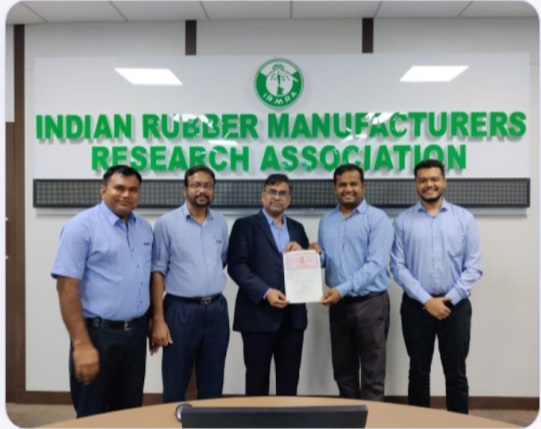How can HR create a positive culture?
Welcome to the exciting world of Human Resources, where building and nurturing a positive company culture takes center stage! In today's fast-paced business landscape, cultivating a workplace environment that fosters happiness, productivity, and growth has become more critical than ever before.

Introduction to HR and company culture
After all, a positive culture not only fuels employee satisfaction but also contributes to overall organizational success.
But what exactly is company culture? Simply put, it encompasses the shared values, beliefs, attitudes, and behaviors that define how things are done within an organization. It's like the DNA that shapes every aspect of your workspace - from interactions between colleagues to decision-making processes.
In this blog post, we will explore why creating a positive culture should be at the top of every HR professional's agenda. We'll delve into strategies for identifying areas of improvement and discuss practical steps you can take to foster a thriving work environment. So get ready to revolutionize your workplace with these tried-and-true methods! Let's dive in!
The importance of a positive culture in the workplace
Positive culture in the workplace is not just a nice-to-have, but rather an essential ingredient for success. It sets the tone for how employees interact, collaborate, and perform their tasks. A positive culture fosters a sense of belonging and fulfillment among employees, leading to increased productivity and job satisfaction.
When employees feel valued and supported, they are more likely to go above and beyond their job responsibilities. This positivity can have ripple effects throughout the organization, improving teamwork, creativity, and innovation. A positive culture also helps attract top talent who are looking for more than just a paycheck; they want to be part of something meaningful.
Creating a positive culture starts with identifying areas that need improvement within your organization. This requires open communication channels where employees can provide feedback without fear of repercussion. By listening to their concerns or suggestions, HR can gain valuable insights into what changes need to be made.
Implementing effective communication systems is crucial for fostering a positive culture. Regular team meetings or town halls allow everyone to stay informed about company goals and initiatives while providing an opportunity for open dialogue. Additionally, creating platforms where employees can share ideas or offer constructive criticism promotes collaboration and transparency.
Employee engagement is another key factor in building a positive culture. Recognizing employee accomplishments goes beyond monetary rewards; it's about acknowledging their efforts publicly and making them feel appreciated as individuals contributing to the overall success of the organization.
Investing in employee development programs shows that you value continuous growth both professionally and personally. Offering opportunities for learning new skills or attending conferences demonstrates your commitment towards investing in your employees' futures.
Prioritizing employee well-being contributes significantly to maintaining a positive culture in the workplace. Providing resources such as wellness programs or flexible work arrangements encourages work-life balance which leads to happier and healthier employees.
In conclusion, a positive workplace culture should not be underestimated when striving towards organizational success. By focusing on effective communication, employee engagement,
developmental opportunities, and promoting employee well-being, HR can create an environment where employees feel valued and motivated to perform their best. A positive culture not only benefits employees but also impacts the overall success and growth of the organization.
Identifying areas of improvement in company culture
Identifying areas of improvement in company culture is crucial for HR professionals looking to create a positive and thriving work environment. One way to assess the current state of company culture is by soliciting feedback from employees through surveys or focus groups. This can help identify any issues or concerns that may be affecting morale or productivity.
Another approach is to analyze employee turnover rates and absenteeism patterns. High turnover or frequent absences could signal underlying problems within the company culture, such as lack of engagement or dissatisfaction.
HR can also review performance evaluation data to identify any patterns related to employee satisfaction and motivation. Are there consistent areas where employees are struggling? Are there opportunities for growth and development that are not being addressed?
It's important for HR professionals to actively listen and observe employees' interactions within the workplace. This includes paying attention to how teams collaborate, communicate, and support one another. Identifying any toxic behaviors or negative dynamics can help address these issues head-on.
In addition, reviewing policies and procedures can shed light on potential areas of improvement in company culture. For example, are there flexible work arrangements in place? Is there a clear process for addressing conflicts? Taking stock of these aspects can help identify gaps that need attention.
By identifying areas of improvement in company culture, HR professionals can take targeted steps towards creating a more positive work environment where employees feel valued, supported, and motivated to excel.
Strategies for creating a positive culture
Creating a positive culture in the workplace doesn't happen overnight. It requires deliberate effort and strategic planning. Here are some effective strategies that HR can implement to foster a positive culture within the organization.
1. Lead by example: The tone of an organization is set from the top, so it's crucial for HR leaders to demonstrate positive behaviors and values. By modeling respect, collaboration, and open communication, they establish expectations for all employees.
2. Foster open communication: Encourage employees to express their ideas, concerns, and feedback freely. Implement channels such as suggestion boxes or regular team meetings where everyone has an opportunity to be heard.
3. Promote teamwork: Collaboration is key in creating a positive culture. Encourage cross-departmental projects and create opportunities for employees to work together towards shared goals.
4. Celebrate achievements: Recognize and celebrate individual and team accomplishments regularly. This boosts employee morale and reinforces a sense of accomplishment.
5. Provide growth opportunities: Invest in employee development programs that help individuals enhance their skills and advance in their careers within the organization.
6. Encourage work-life balance: Support flexible working arrangements when possible, provide wellness initiatives, encourage breaks during the day, or offer stress management resources.
7. Support diversity & inclusion efforts: Actively promote diversity at all levels of the organization through recruitment practices that aim for inclusivity while fostering cultural awareness among employees.
By implementing these strategies consistently over time, HR can cultivate a positive culture where employees feel valued, engaged,and motivated - leading to increased productivity and overall organizational success.
Implementing effective communication and feedback systems
Implementing effective communication and feedback systems is crucial for creating a positive culture within an organization. By fostering open lines of communication, employees feel valued and heard, leading to increased engagement and productivity.
One strategy for implementing effective communication is to establish regular team meetings where everyone has the opportunity to share ideas, concerns, and updates. These meetings can help build trust among team members and promote a sense of unity.
Additionally, organizations should encourage transparent communication between managers and employees. This can be achieved by providing avenues for anonymous feedback or suggestions through suggestion boxes or digital platforms. By allowing employees to express their thoughts without fear of retribution, companies can gain valuable insights into areas that need improvement.
Another important aspect of effective communication is active listening. Managers should practice attentive listening skills when engaging with their teams. This not only shows respect but also helps in understanding employee perspectives better.
Feedback plays a crucial role in maintaining a positive culture as well. Regular performance reviews provide opportunities for constructive criticism and recognition of achievements. Feedback should be specific, timely, balanced, and focused on growth rather than blame.
In conclusion without concluding , implementing effective communication and feedback systems fosters transparency, collaboration ,and trust within an organization . This contributes significantly to the creation of a positive company culture where employees feel valued ,engaged, and motivated to perform their best.
Encouraging employee engagement and recognition
Encouraging employee engagement and recognition is crucial for creating a positive culture within an organization. When employees feel valued and appreciated, they are more likely to be motivated, productive, and loyal.
One effective strategy for promoting employee engagement is to provide opportunities for collaboration and teamwork. Encourage employees to work together on projects or initiatives, fostering a sense of camaraderie and shared purpose. This not only enhances productivity but also creates a supportive environment where individuals can learn from one another.
Recognition is another powerful tool in building a positive culture. Taking the time to acknowledge and celebrate employees' achievements boosts morale and motivation. Implementing an employee recognition program that includes regular feedback, rewards, or even simple expressions of appreciation can go a long way in making employees feel valued.
In addition to recognizing accomplishments, it's important to provide ongoing support for professional development. Offering training programs or educational opportunities helps employees enhance their skills and knowledge while demonstrating the company's commitment to their growth.
Creating open lines of communication is vital as well. Ensure that there are channels through which employees can voice their opinions, concerns, or suggestions without fear of retribution. Actively listening to feedback shows respect for individuals' perspectives and fosters trust within the organization.
By encouraging employee engagement through collaboration, providing recognition for achievements big or small, supporting development opportunities,and establishing effective communication channels - organizations can cultivate a positive culture where every individual feels valued as part of the team.
Investing in employee development and well-being
Investing in employee development and well-being is a crucial aspect of creating a positive culture within an organization. When employees feel supported and valued, they are more likely to be engaged, motivated, and productive. Here are some strategies that HR can implement to prioritize employee development and well-being.
Providing opportunities for professional growth and learning is essential. This can include offering training programs, workshops, or access to online courses. By investing in their skills and knowledge, employees feel empowered and motivated.
Promoting work-life balance is vital for employee well-being. Encourage employees to take breaks, use vacation time effectively, and maintain healthy boundaries between work life and personal life.
Fostering a supportive environment where mental health is prioritized is crucial. Implement initiatives such as Employee Assistance Programs (EAPs), mindfulness practices or wellness activities to support overall well-being.
Additionally, offering flexible work arrangements like remote work options or flexible hours can significantly contribute to employee satisfaction levels.
Lastly but not least important - recognizing the achievements of employees through regular feedback sessions or performance appraisals helps in boosting morale while also identifying areas for improvement.
By investing in the development and well-being of your employees, you create a positive culture that values their growth both personally and professionally. This not only leads to increased job satisfaction and retention but also attracts top talent to your organization.
Measuring and evaluating the success of a positive culture
Measuring and evaluating the success of a positive culture is essential for HR to understand if their efforts are making a difference in the workplace. One way to do this is by conducting regular employee surveys or feedback sessions. These can provide valuable insights into how employees perceive the company culture and identify areas that need improvement.
Another effective method is to track key performance indicators (KPIs) related to employee engagement, satisfaction, and productivity. This could include metrics such as employee turnover rates, absenteeism levels, or even customer satisfaction ratings which can indirectly reflect a positive company culture.
Additionally, HR can also assess the effectiveness of initiatives targeted towards creating a positive culture through qualitative measures like focus groups or interviews with employees. This allows for more in-depth discussions about their experiences and perceptions.
It's important for HR to analyze all gathered data objectively and look for patterns or trends that indicate whether their efforts have had a positive impact on the overall workplace environment.
By regularly measuring and evaluating these aspects of company culture, HR can identify what strategies are working well while also pinpointing areas that require further attention. This continuous evaluation ensures that improvements are made where necessary so that the organization can foster an even stronger positive culture over time.
Conclusion:
Creating a positive culture is not just a task for the HR department, but it involves the collective effort of every individual within the organization. A positive culture can have a profound impact on employee engagement, productivity, and overall satisfaction.
By identifying areas of improvement in company culture and implementing effective strategies, HR professionals can play a pivotal role in shaping a positive work environment. This includes establishing open lines of communication and feedback systems to foster transparency and trust among employees.
Encouraging employee engagement and recognition also goes a long way in creating a positive culture. Recognizing the contributions of employees and celebrating their achievements helps boost morale and motivation.
Investing in employee development and well-being is another crucial aspect of fostering a positive workplace culture. Providing opportunities for growth, training programs, flexible work arrangements, and promoting work-life balance can significantly contribute to employee satisfaction.
Measuring and evaluating the success of a positive culture is equally important. HR professionals should continuously assess employee satisfaction through surveys or feedback sessions to identify areas that need improvement or adjustment.
Creating a positive company culture requires dedication, commitment, and active involvement from all levels of an organization. By prioritizing communication, recognizing achievements, investing in development initiatives, and regularly assessing progress, HR professionals can lead the way in cultivating an environment where employees feel valued, motivated, and engaged.
Remember, a thriving company starts with a strong and vibrant culture!











.jpg)




































